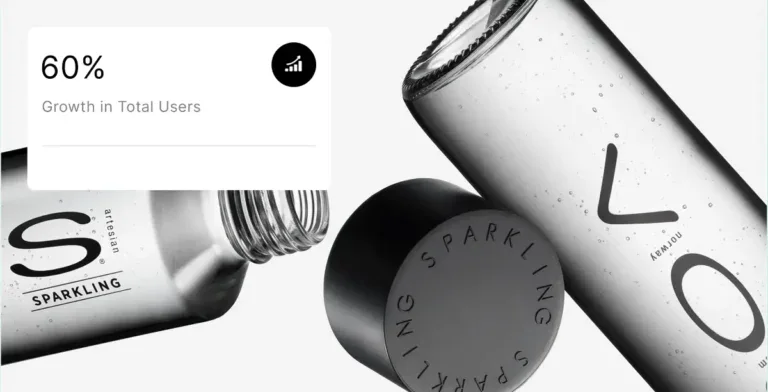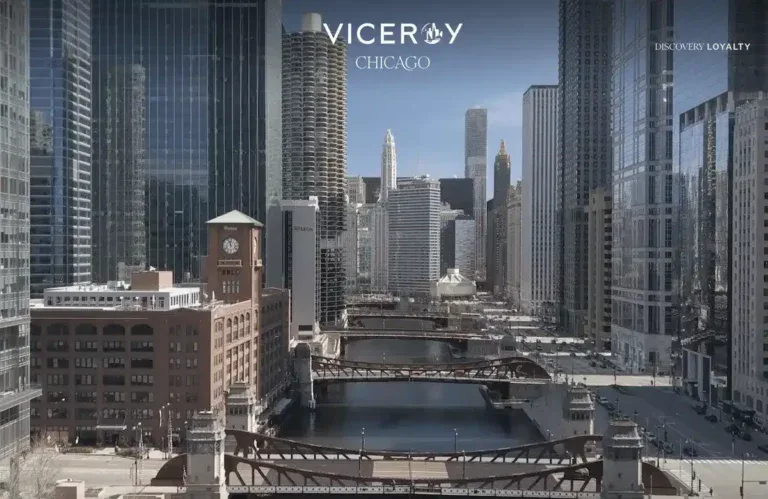Did you know that 75% of users assess a company’s credibility based on its website design? Luxury real estate websites must deliver more value than ever before to convert visitors into clients.

Research reveals that 88% of consumers abandon websites with poor UX. This behavior matters more in the high-end market, where the median luxury sales price has surged to $6.87 million, an 18% year-over-year increase.
The right design elements determine whether a $5.7 million penthouse sells or stays on the market. This piece looks at new design methods that change how NYC’s top properties show up online in 2026.
Trying to build a new real estate website but don’t know where to start? Let us help.
Mobile-First and Responsive Design
Mobile optimization is the lifeblood of modern NYC luxury real estate websites in 2026. Over 60% of property searches now begin on phones or tablets. The digital world has shifted from desktop-first to mobile-first design. This change has transformed the marketing of high-end properties online.
Why Mobile-First Matters in NYC Real Estate
Numbers paint a clear picture. More than 60% of people worldwide browse websites on mobile devices. Responsive design has become essential for luxury real estate businesses. This becomes even more vital in NYC’s competitive market, where wealthy clients are always moving around.
People using mobile devices have little patience. When luxury property pages take more than 2 seconds to load, 53% of visitors leave. The average mobile page loads in about 15 seconds. This creates a big gap between what users want and what they get.
Google’s mobile-first indexing means that your mobile site is a lot more important than you might think for ranking. If your luxury real estate website isn’t well optimized for mobile, then most, if not all, of your important listings will ever achieve max visibility. Having exceptional mobile performance will lead to higher rankings, more organic traffic, and stronger lead quality.
AMPs and Fast-Loading Experiences
Accelerated Mobile Pages (AMPs) play a key role in the 2026 luxury real estate world. Google created AMPs to strip pages down to the basics. These pages load almost instantly because they use cached versions to show content to potential buyers.
The results speak for themselves. ThinkwithGoogle reports that each second of delay cuts conversions by 20%.
NYC luxury real estate sites gain three main benefits from AMP:
Pages that load instantly are perfect for busy high-net-worth clients.
- Better search rankings through improved Core Web Vitals scores.
- A smooth user experience that keeps potential buyers looking at exclusive listings.
Examples from Top NYC Luxury Sites
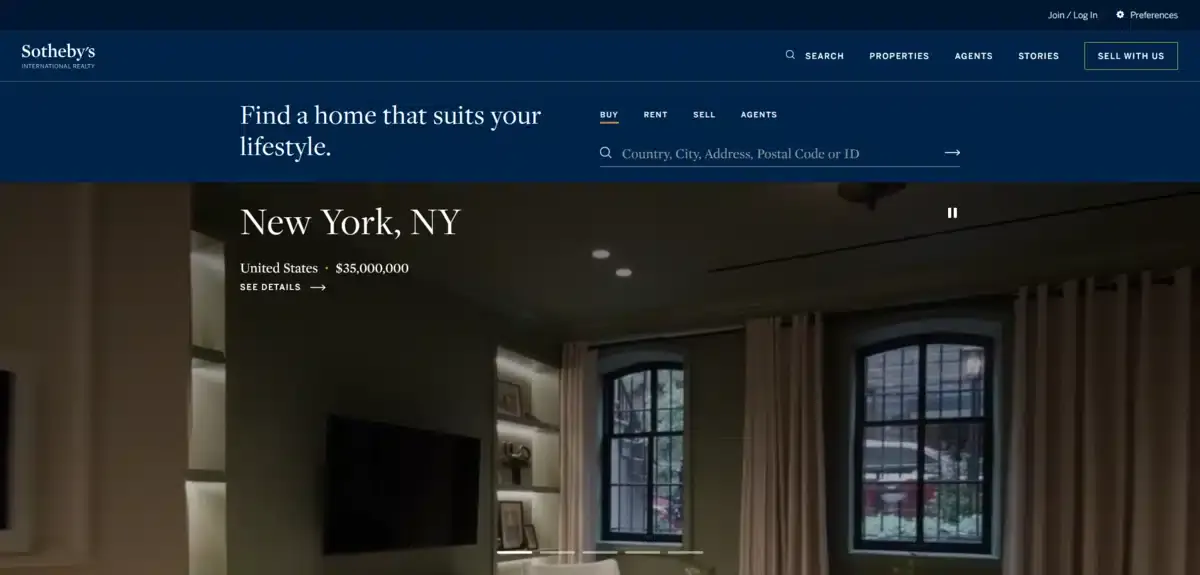
Sotheby’s International Realty and Douglas Elliman showcase properties beautifully on all devices with their fantastic website designs.
These top-tier NYC website design examples make navigation easy with well-placed contact buttons. Buyers can call agents with one tap. The mobile layouts put key details upfront. Professional photos, prices, and location data are all available without endless scrolling.
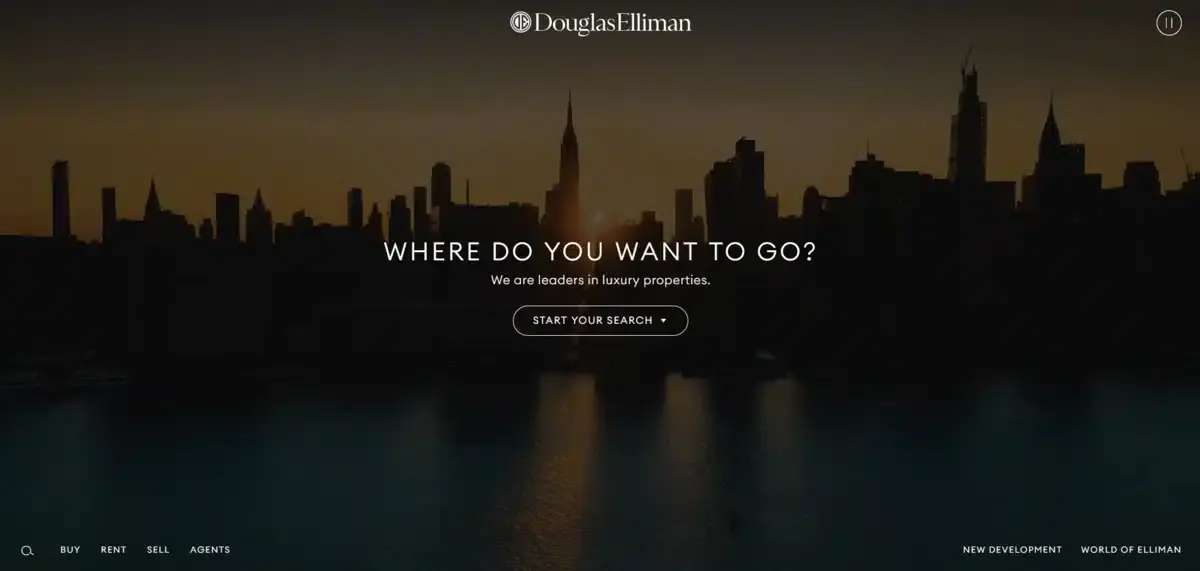
This approach to mobile design gets results. ThemeForest marketplace found that real estate websites with mobile-responsive features see 35% higher engagement on mobile devices compared to their competitors.
AI Personalization and Smart UX
AI personalization completely redefines how buyers interact with NYC luxury real estate websites. Every single use is guided through a curated experience unique to them which shifts your website from being static and predictable to being dynamic and connecting with visitors instantly.
Real-time content adaptation
Smart websites in the luxury market adjust their content based on how visitors interact with them. AI algorithms study visitor behavior to show relevant listings right away. The website changes as you move through it, giving you a customized browsing experience.
Virtual staging takes this customization even further. AI tools help buyers see exactly how an apartment would look in their chosen style. They can view properties with specific finishes like cherry wood versus walnut. When buyers can picture spaces as their own, they’re more likely to sign a lease.
Natural language search capability has become a popular feature. Buyers don’t need to use rigid dropdown filters anymore. They can type simple phrases like “family home with a garden near schools.” This user-friendly approach helps wealthy clients find the right properties quickly.
Explore how we redesigned and improved Gallelli’s website in our latest case study.
Behavior-based property suggestions
Modern luxury real estate sites rely on AI-powered property recommendations. These systems track what users do, what they like, and what they search for to suggest properties they’ll love.
The technology looks at several factors at once:
Where people want to live and neighborhood patterns.
- Price ranges and market conditions.
- Past pricing data and browsing habits.
- Specific amenities and architectural features.
Buyers can find hidden gems they might have missed otherwise. Sellers benefit too, as their properties reach qualified prospects automatically. This reduces how long multi-million dollar listings stay on the market.
AI chatbots and virtual assistants
Today’s real estate chatbots do more than provide simple support. They understand natural language and complex property requirements. They provide clear details about listings. This includes specs, amenities, locations, nearby schools, and transport options.
AI now plays a major role in high-stakes negotiations like commercial leases. It now can review tenant profiles, property information, and market trends to help you create accurate negotiation transcripts. The system watches communications in real time. It coaches agents and helps them avoid words that could cause legal issues.
These smart assistants combine smoothly with existing CRM systems. All lead data is captured and nurtured through other marketing channels. Agents end up with a data-rich approach that helps them understand what clients want while automating routine tasks.
Immersive Visuals and Interactive Media
NYC luxury real estate websites in 2026 need immersive visual experiences. Potential buyers now expect to virtually “walk through” properties before they schedule in-person visits.
Video tours and 3D walkthroughs
High-end real estate videos now dominate NYC luxury property marketing. They work much better than static images. These videos include drone footage for sweeping aerial views. They use carefully selected music tracks that create emotional connections.
Professional editing with dynamic transitions keeps viewers involved. Buyers can imagine their lives in the home before they step inside.
3D virtual tours give 24/7 access to out-of-state or international buyers. They can see the full property without traveling. Platforms like Matterport let potential buyers explore properties at their own pace.
These interactive walk-throughs create a unique experience that static images can’t match. Long-distance or investment buyers find this convenience valuable, which helps them make decisions faster.
Micro-interactions that guide user behavior
Small, subtle moments of feedback improve the luxury real estate browsing experience a lot. These micro-interactions make functional experiences enjoyable. Buttons change color when users hover over them. Subtle animations confirm completed actions.
These tiny details serve many purposes. They keep users informed about the current status, like download progress. Hearts appear after “liking” a property to encourage deeper involvement. They show where to click or tap for navigation. Luxury real estate websites use them to show brand personality and make the digital product feel alive.
Augmented reality for virtual staging
AR staging leads the way in luxury property marketing. Potential buyers can point their devices at empty rooms during in-person tours. They see fully furnished spaces on screen. AR apps use the device’s camera and sensors to place virtual furniture in the room. Everything looks realistic with proper scale and perspective.
Modern AR applications offer more features. Buyers can switch between different interior design styles. They can move virtual furniture around the space. This technology connects online virtual staging with empty physical spaces. Buyers form emotional connections with properties through this consistent visual experience.
Inclusive, Ethical, and Accessible Design
Accessibility has evolved beyond mere compliance in NYC luxury real estate websites. It’s now the lifeblood of ethical design practice. The market relies on international buyers and a varied clientele. This makes inclusive digital experiences a key focus for luxury property marketers.
ADA compliance and screen reader support
The Americans with Disabilities Act (ADA) reaches beyond physical spaces into digital platforms. Real estate businesses must make their websites legally accessible.
Courts see ADA Title III websites as “places of public accommodation.” This means people with disabilities must have equal access. Luxury real estate sites must work well with assistive technologies. This includes screen readers, Braille terminals, and speech-to-text software.
The sites must allow keyboard-only navigation, offer text alternatives for images and videos, and have a clear structure for the content. A well-laid-out site uses logical heading sequences without skipping levels. This helps screen reader users direct themselves efficiently. Each property image needs descriptive alt text that tells the story of its features and conditions.
Multilingual content for global buyers
International buyers in NYC’s luxury market often want content in their native languages. Research shows over 60% of internet users rarely buy from English-only websites. This becomes crucial since China and India lead global internet usage with over 1 billion users each.
Adding multilingual content needs more than simple translation. The content must appeal emotionally to buyers from different cultural backgrounds. This strategy builds brand recognition (71% of digital marketers confirm this) and promotes trust.
Designing for all age groups and abilities
Universal design principles help websites from NYC companies serve users of every age and ability level. Older clients gain from adjustable font sizes and high color contrast. These features make reading easier. Technical standards require contrast ratios of at least 4.5:1 between text and background.
Easy-to-use forms with clear labels make rental applications and property inquiries simple. This focus on accessible design creates a more compassionate digital world that works for everyone.
Learn how we increased HPI Real Estate’s lead generation with a brand new website in our recent case study.
Sustainable and Performance-Optimized Websites
Marketers of luxury properties in NYC see that sustainable web design helps the environment and gives them a competitive advantage. Web activity contributes 2% of all greenhouse gas emissions, matching Germany’s carbon output. Their websites run faster and more efficiently.
Not caring about sustainability is one of the biggest web design mistakes you can make this year.
Green hosting and energy-efficient design
Environmentally responsible luxury real estate websites rely on green web hosting. These services use renewable energy sources like wind or solar power to run their data centers. GreenGeeks leads this movement by matching every unit of power used with three times that amount in renewable energy through partnerships with environmental foundations.
The benefits go beyond helping the environment. Green hosting providers build more energy-efficient infrastructure. This results in better performance for property websites that showcase high-resolution images of multi-million dollar listings. Luxury brands can prove their dedication to sustainability through certifications from organizations like the Green Web Foundation without compromising custom website quality.
Optimized media and code for faster load times
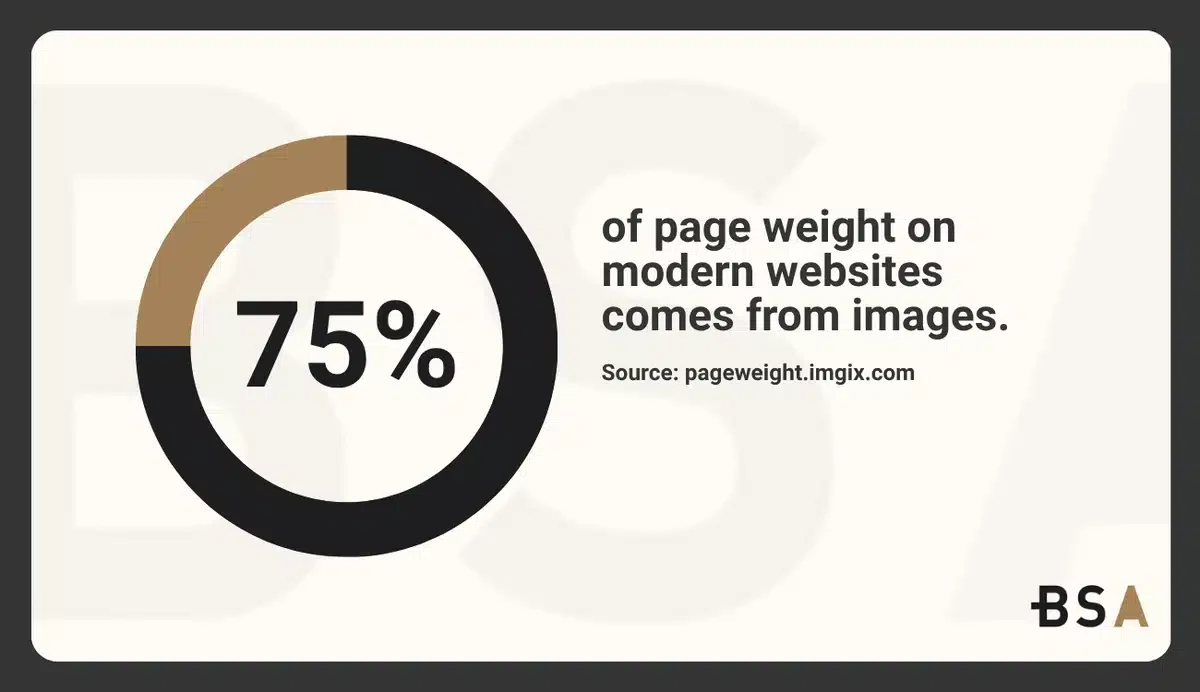
Better website performance comes from image optimization. Images make up 75% of page weight on modern websites. Compressed visual assets directly speed up loading times and enhance user experience.
NYC’s luxury property sites depend on stunning visuals. Lazy loading makes images appear only as users scroll down the page. This speeds up the original load time while keeping the visual appeal needed for marketing exclusive properties.
Code minification adds another layer of performance improvement by reducing file sizes. Brotli compression can reduce non-image elements by up to 82%. This helps mobile users view luxury listings quickly.
Minimalist design for reduced digital footprint
A simple website design highlights what truly matters: luxury properties shine without distractions. This removes “noise” that might turn away potential high-net-worth clients. Clear, purposeful layouts help visitors take action. They can book penthouse viewings or contact agents about exclusive listings.
Minimalism cuts down data transfer needs and improves user experience. Busy executives can quickly find the right properties. This gives them an edge in NYC’s fast-changing luxury market.
Search engines reward faster sites with better rankings. Marketers in areas like Tribeca or the Upper East Side attract more buyers. This is especially true when wealthy buyers seek multi-million dollar homes.
Expressive Branding Through Design Language
Design language influences how visitors view luxury properties in NYC. It is key to distinguishing million-dollar listings. Buyers make their first impressions within seconds. Smart design choices help create meaningful connections with wealthy clients.
Bold typography and color psychology
Luxury real estate websites often use the stylish Montserrat font. This choice helps them attract their target audience right away. This font choice combines with carefully planned color schemes to convey sophistication without words.
When it comes to color psychology, black defines luxury through elegant use, while dark accents complement stylish typography. Clean gray-and-white palettes boost luxury appeal. These colors create perfect backdrops that highlight dramatic property visuals.
The most successful luxury sites maintain their brand identity on all platforms. Clients quickly recognize properties on websites, social media, or printed materials.
Geometric layouts and asymmetry
Geometric design sends subtle but powerful emotional cues to visitors. Squares and rectangles convey a sense of strength and dependability, while triangles create a sense of energy and movement.
Asymmetrical layouts create interest visually by intentionally placing elements in an uneven fashion. This purposeful imbalance captures the attention of visitors and makes digital designs stand out. Web designers keep cohesion and balance visual weight by making good use of size, color contrast, and negative space by using principles such as rule of thirds and the golden ratio.
Storytelling through visual hierarchy
Visual storytelling surpasses photos and videos. It needs consistent design throughout all branding materials. Each element should show the agent’s personality and professionalism. This includes logos, color schemes, and typography.
Simple, elegant layouts help visitors go through your property website with little to no friction. Featuring testimonials and agent photos in the right spots can help build confidence and personal connection with visitors.
The most successful luxury websites leverage hierarchy to draw attention to the most important parts of their pages which generally are premium photography, pricing information, and key location insights.
Get a Custom Real Estate Website That Converts With Blacksmith
NYC’s luxury real estate websites face new challenges as the market booms. High-end property sales are rising fast. These websites must work harder to turn qualified prospects into clients who buy multi-million dollar properties.
But the reality is that your website needs professional work if you want to overcome these new challenges presented. And that’s where we come in.
Here at Blacksmith, we are real estate website professionals with several successful websites under our belts.
As an experienced web design company in New York, we have a group of seasoned web designers ready to create the perfect real estate website for you. You’ll get all of the latest marketing and website trends while still standing out from the competition.
Unsure if a new website is what your real estate company needs? Don’t worry, click here to schedule a call with us and we’ll give you a full brand audit for free. This way we can show you all the areas that are hurting your engagement rate and overall conversions.conversions.

